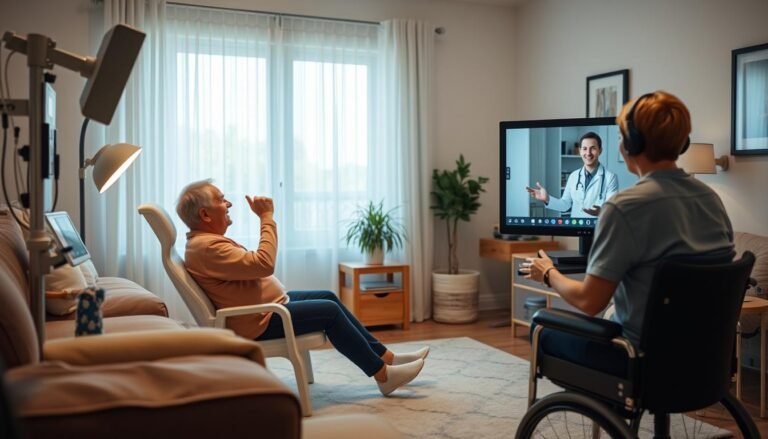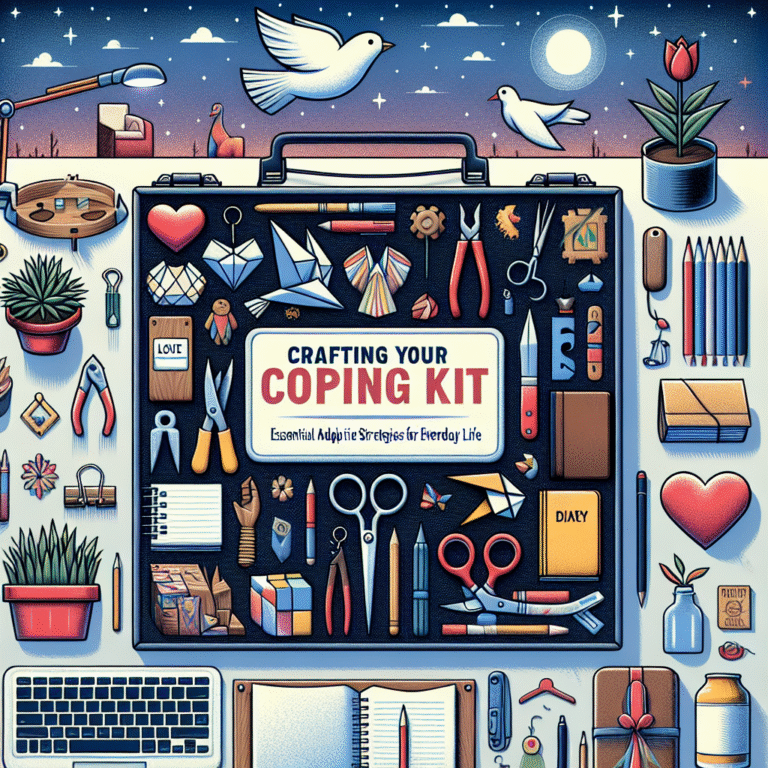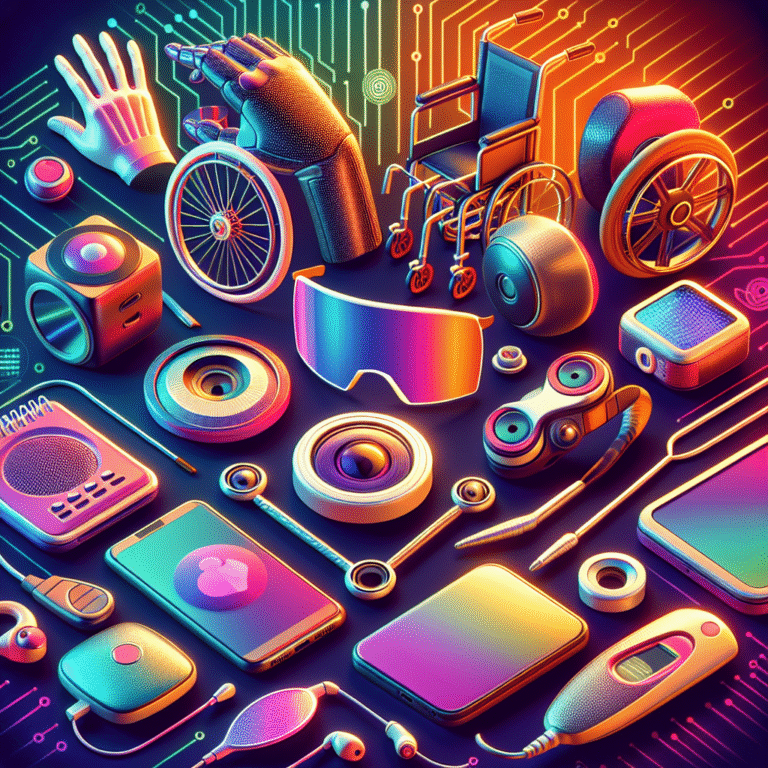
Introduction: A Brave New World in Employment
In an era characterized by rapid technological advances and evolving workplace norms, the quest for inclusivity has never been more pressing. The future of work is deeply intertwined with how we address the employment challenges faced by marginalized groups, especially people with disabilities. The Future of Work: How Vocational Rehabilitation is Shaping Employment for People with Disabilities captures a pivotal movement aiming to transform not just individual lives, but the work culture itself. As organizations begin to recognize the immense value of diverse talent, vocational rehabilitation emerges as a crucial player, offering pathways to competency, confidence, and community engagement.
Understanding Vocational Rehabilitation
What Is Vocational Rehabilitation?
Vocational rehabilitation (VR) is a service designed to assist individuals with disabilities in gaining access to meaningful employment opportunities. This may involve a range of services including job training, counseling, and assistance with job placements. At its core, the goal of vocational rehabilitation is to empower individuals to achieve personal and financial independence through work.
Historical Context
Vocational rehabilitation has its roots in the late 1920s when the concept of supporting disabled individuals in the workforce began to take shape. Over the decades, various laws, such as the Vocational Rehabilitation Act of 1973 in the United States, were enacted to enhance these services, accommodating a growing understanding of disabilities and the need for inclusivity in the workplace.
The Transformative Role of Technology
Adaptive Technologies
One of the most significant elements shaping the future of work is the rise of adaptive technologies. These tools are designed to assist individuals with disabilities and are an integral part of how vocational rehabilitation is evolving. From voice-to-text software for individuals with mobility impairments to specialized adaptive devices that cater to sensory disabilities, the impact is profound.
Case Study: The Role of Assistive Technology in Employment
In 2020, a report by the National Center for Learning Disabilities presented the story of Emily, a young woman with a learning disability who struggled to secure a marketing position. With the help of assistive technology, Emily was able to adapt her work style and present her ideas effectively during interviews. This led to her securing a position at a major marketing firm, exemplifying how technology can bridge gaps for disabled employees.
Remote Work Trends
The COVID-19 pandemic accelerated the adoption of remote work, creating newfound opportunities for people with disabilities. The shift has made it easier for them to find roles that suit their strengths without the barriers posed by physical office environments.
Table: Benefits of Remote Work for Disabled Employees
| Benefit | Description |
|---|---|
| Flexibility | Flexible hours can accommodate medical appointments. |
| Reduced Commuting Stress | Eliminates physical stress of travel. |
| Accessible Environments | Employees can create comfortable workspaces. |
| Broader Job Pool | Ability to apply for roles globally, not locally. |
The Current Landscape of Employment for People with Disabilities
Employment Rates and Gaps
Despite improvements and legislative support, individuals with disabilities still face significant barriers in the job market. According to the Bureau of Labor Statistics, the employment rate for individuals with disabilities hovers around 19%, compared to nearly 66% for those without disabilities. These disparities underscore the urgency of innovative approaches like vocational rehabilitation.
Stakeholder Involvement
Various stakeholders, including government agencies, nonprofit organizations, and private companies, are involved in pushing the agenda for inclusive workplaces. Collaborations among these entities can amplify the effectiveness of vocational rehabilitation services.
Case Study: The Corporate Partnership Model
The "Employability Program" initiated by a multinational company in collaboration with a local nonprofit has successfully integrated individuals with disabilities in various roles. The program includes mentorship, job coaching, and skill development, leading to significant increases in employment rates among participants.
Skill Development: The Core of Vocational Rehabilitation
Tailored Training Programs
Vocational rehabilitation focuses on creating customized training programs that cater exclusively to the individual needs of participants. This personalized approach can make a significant difference in successfully transitioning to employment.
Chart: Breakdown of Training Modalities in Vocational Rehabilitation
| Training Modality | Percentage of Programs Offered |
|---|---|
| On-the-job training | 45% |
| Classroom instruction | 30% |
| Online courses | 25% |
Soft Skills vs. Hard Skills
While technical skills are essential, soft skills such as communication, problem-solving, and teamwork are critical for workplace integration. Vocational rehabilitation programs increasingly prioritize these skills to enhance employability.
Policy Changes and Legislative Support
The Americans with Disabilities Act (ADA)
The ADA has played an essential role in shaping the landscape for disabled workers. By prohibiting discrimination and mandating reasonable accommodations, the ADA lays the groundwork for a more inclusive work environment.
New Initiatives
Recent initiatives are emerging, accentuated by the shifting attitudes toward workplace diversity. One notable initiative is the "Disability Employment Initiative," which aims to improve educational and employment outcomes for individuals with disabilities.
The Future of Work: Inclusive Strategies and Innovation
Creating Inclusive Work Policies
Organizations are increasingly adopting inclusive work policies that prioritize diversity. This creates a conducive environment for individuals with disabilities, enhancing their potential for employment.
Collaboration with VR Services
Working closely with vocational rehabilitation services allows organizations to leverage expertise in areas like job coaching and training, ensuring a smoother transition for employees with disabilities.
Inspirational Success Stories
Success Story: Tech For All
A tech startup launched a "Tech For All" program, aimed at hiring individuals with disabilities. By focusing on inclusive hiring practices and providing customized training through VR services, they have successfully hired over 100 employees with disabilities in two years. This program has become a model for other startups and corporations, demonstrating that inclusivity is not just a moral obligation but a business imperative.
Additional Example: The Restaurant Sector
One mid-sized restaurant chain implemented a VR program to train and hire individuals with varying disabilities. The initiative not only positively impacted employee lives but also improved the company’s reputation and customer satisfaction.
Conclusion: A Brighter, Inclusive Future
The future of work is bright, especially for individuals with disabilities fortunate enough to receive the support of vocational rehabilitation services. As society increasingly recognizes the value of diversity in the workforce, the focus on dismantling barriers and creating empowering opportunities is crucial.
In transitioning to a more inclusive work culture, every stakeholder has a role to play—whether that be through legislation, corporate policies, or community engagement. The message is clear: to thrive in this new era, we must prioritize inclusivity and ensure that vocational rehabilitation serves as a catalyst for positive change.
Act Now: Join the Movement
We encourage readers to become advocates for inclusivity in their workplaces. Start conversations, participate in local initiatives, and educate others on the significance of vocational rehabilitation. Together, we can shape a strong and diverse workforce for the future.
FAQs
1. What types of services does vocational rehabilitation provide?
Vocational rehabilitation offers various services, including job training, counseling, skill assessments, and job placement assistance.
2. How can I access vocational rehabilitation services?
You may contact your local vocational rehabilitation office, often linked with state agencies specializing in disability services.
3. How does technology fit into vocational rehabilitation?
Adaptive technologies are incorporated into vocational rehabilitation to provide individuals with disabilities the tools they need to succeed in their jobs.
4. What is the role of employers in promoting inclusive workplaces?
Employers can implement policies that foster diversity, engage in training programs, and partner with vocational rehabilitation services for support.
5. What is the impact of remote work on employment for people with disabilities?
Remote work offers flexibility and reduces barriers that individuals with disabilities may encounter in traditional office settings, increasing job opportunities and satisfaction.
The Future of Work: How Vocational Rehabilitation is Shaping Employment for People with Disabilities is a journey toward not just equity but flourishing workplace environments. Each step taken to provide access and opportunity transforms lives and promotes collective growth. Let’s stay committed to this crucial cause and work together to create a world where everyone can thrive.
















